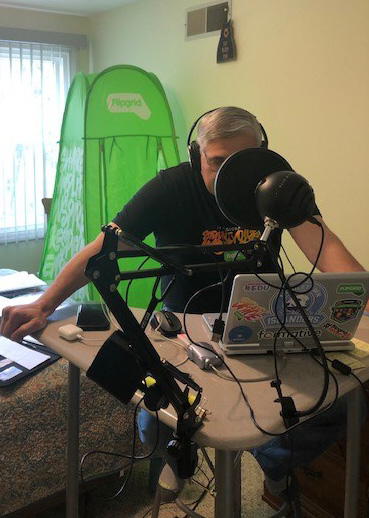
Giving Students a Voice During Unprecedented Times
Luis Oliveira is an instructor for English Language Learners (ELL) and director of Unified Arts at Middletown High School in Middletown, Rhode Island. He is also among the many educators who have had to make the shift to virtual remote learning during the COVID-19 pandemic.
Middletown High School boasts a diverse student population. While much of his class are immigrants from Brazil and Guatemala, Luis also has students from El Salvador, Chile, Jamaica, Japan, Cameroon, Denmark, Bangladesh, Cape Verde, Puerto Rico and Ukraine.
Technology has always played an important role in Luis’ classroom. He uses technology to enhance the learning experience and give a voice to his ELL students. Faced with this pandemic, his students have the clear advantage of already having experience using programs such as Microsoft Teams for Education and FlipGrid.
On the contrary, the transition wasn’t as smooth for all the teachers and students at the school. “Since not all teachers were using technology tools on a daily basis, there was a learning curve. In addition, there were students who couldn’t connect for a variety of reasons. All of this made the first couple of weeks very interesting.” As one of four Middletown High School technology coaches, and a Microsoft Innovative Educator Expert, Luis has helped train his fellow teachers and has been providing them with assistance as needed throughout this crisis.
During these unprecedented times, Microsoft Teams has become an essential part of the students’ learning process. With the transition to remote learning, Teams has become significantly more important as it allows Luis to connect with his students daily for their class meetings, as well as to also check up on them.
Luis also frequently integrates the use of Immersive Reader into his classes. With the Immersive Reader in Microsoft Teams for Education, students can hear posts, chat messages, and have their assignments read aloud. This tool can translate over 60 languages, which is important when working with such a diverse group of students.
Using Microsoft Teams, he has also been able to get creative and adapt traditional classroom activities like breaking into groups. “When we’re in the classroom and it comes time to have to break into groups, I just say, ‘You four go sit at that table, and you three go to this table.’ I can’t do that when everybody’s at their own house.” Luis has discovered he can achieve this virtually by leveraging channels in Microsoft Teams. He is able to create separate channels for each group of students. Here, students can communicate and work easily with their group and he is able to jump from channel to channel (or group to group) to chat or meet with each group.

“Microsoft has done a tremendous job of listening to the needs of the teachers who are trying to teach students in a way they haven’t done before and adapting those tools to their needs,” he explained. Microsoft Teams recently shared an update including backgrounds for video calls. Previously, he and his students used to blur their backgrounds. Now, he likes to personalize the background with fun images such as the students’ class picture.
Beyond the classroom, Luis has been able to leverage these tools to empower his students’ families. Though the district provided hotspots and laptops for some of the students who needed them, his students and their parents didn’t all have the tools or knowledge of how to connect to the hotspot. Using Microsoft Translator and the Immersive Reader, he translated documents and instructions for these families. “These tools weren’t designed for this. They were designed for straight educational purposes and they’ve become lifesavers really. They’ve made it possible to get information to folks who may not have received it otherwise.”
As important as technology has been to help his students and colleagues adapt to the new normal, he reminds us that being an educator during a crisis also comes with the responsibility of the students’ well-being. “Make sure that we are connecting with them and checking in on them. Not just for schoolwork, but also for the emotional state.” He explained how easy it is to get caught up and forget that curriculum is not the main priority now. Educators need to focus on what is most important, making sure that students are connecting and are okay.
Luis has gone above and beyond for his students during this time—from keeping the lines of communication open to making trips to their houses to drop off hotspots and computers. “Usually you have contact with parents and make an occasional phone call when the kids are in trouble, but never to make sure that they know how to set up the computer or make sure that that the family is okay. I think this scenario we’re in now has changed education forever. Education will never be the same again.”
